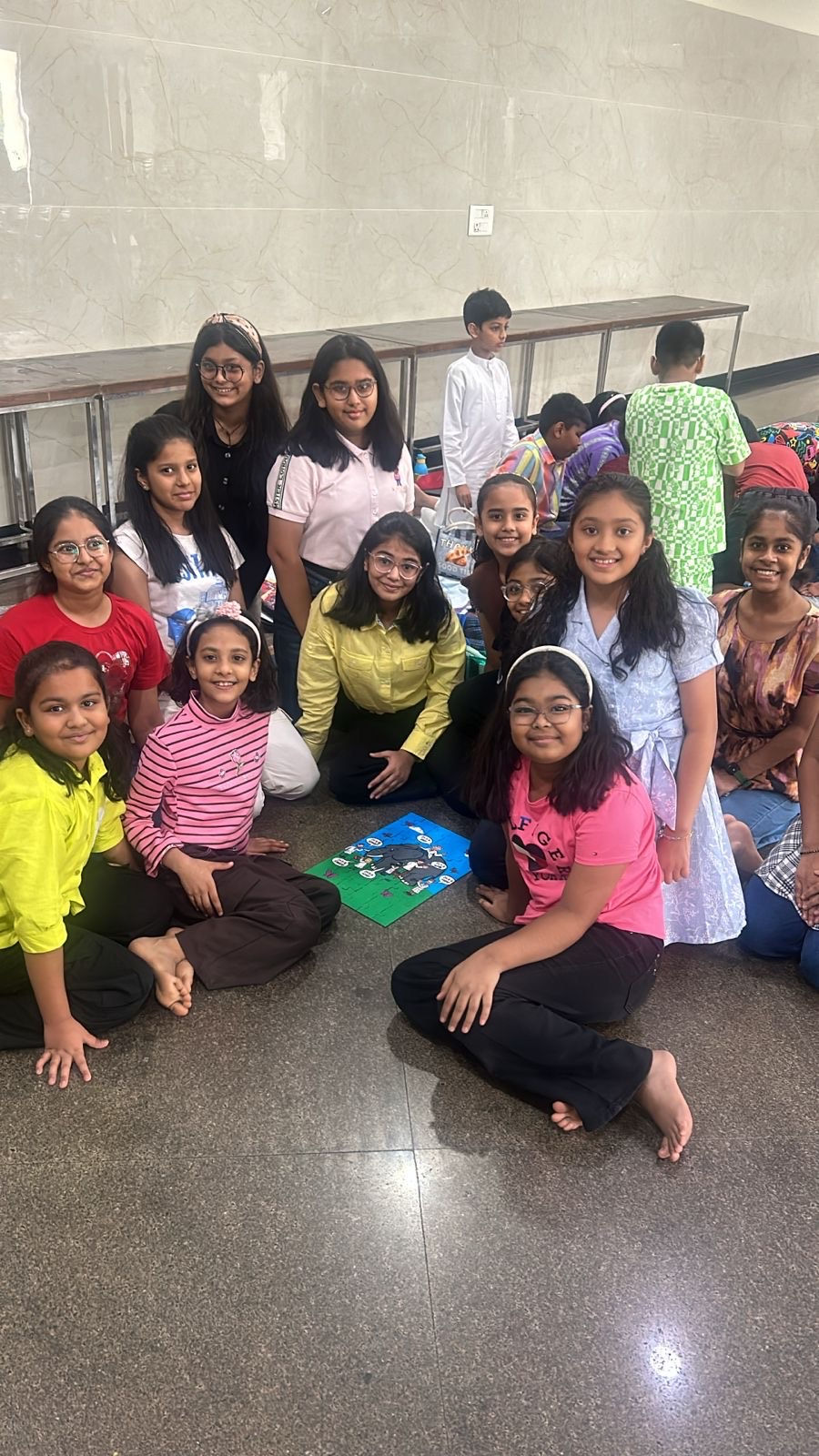Dharma Shiksha - Class 7
- Neha Jain

- Jul 15
- 4 min read
Jai Jinendra everyone! So we’re here with yet another blog discussing all the amazing stuff we learned in our last Dharma Class.
First of all, we’re ecstatic to note there’s been a significant jump in the number of kids attending our class – thanks to the inspiration from Shri Prabhas Muni Ji Maharaj.
That’s the power of a Guru!
When our revered Gurus say something, people stop and listen.
So as usual, we started our 7th Dharma Class with a revision of all the things we’ve learned till now. And then we moved on to explaining who our gurus are, why should we listen to them, and what makes them so special…
Who are our gurus?
Imagine you are in a dense forest with no Google Maps and no clear path. You want to reach a beautiful, peaceful land far away - a place where there is no pain, no anger and no fear (Moksha).
But without any map to guide you, how will you get there?
That’s where a Guru comes in.
Gurus are like lamps in the dark. They don’t walk the path for us, but they light the way to make our journey easier.
Why should we look up to them?
Gurus are far ahead of us in terms of wisdom and spiritual knowledge. They are well on their way towards the ultimate destination Moksha.
If they want, they can choose to climb that path alone. But no – our gurus CHOOSE to guide us so that we can also start our journey towards Moksha. Such is their generosity and kindness!
We can think of gurus like the guides on a mountain climb. They’ve already climbed higher than us. They know the dangers. They help you avoid falling, show you where to step, and encourage you to keep going.
Without them, it’s easy to get lost. But under their guidance, you move closer to peace, truth and ultimately, Moksha.
So in short, Gurus are our Google Maps in the journey towards Moksha!
Slogan of the Day:
“Google dikhaye sansar ka rasta,
Guru dikhaye Moksha ka rasta!”
Fun Time:
We divided the kids into groups and gave them a puzzle to solve.

Now this may look like a normal jigsaw puzzle but the meaning behind it is IMMENSE. It showcases a story that beautifully explains the concept of Anekantwad.
Let’s discuss the story first.
Anekantwad Story:
Once upon a time, six blind men heard that a strange animal called an elephant had come to their village. They had never seen one before, so they went to touch it and figure out what it was like.
Each man touched a different part of the elephant.
1. The first man touched the trunk and said, “An elephant is like a thick snake.”
2. The second touched the ear and said, “No! It feels like a big fan.”
3. The third touched the leg and said, “You’re both wrong! An elephant is like a tree trunk.”
4. The fourth touched the side of the body and said, “It’s more like a wall!”
5. The fifth touched the tail and said, “No way—it’s just a rope.”
6. The sixth touched the tusk and said, “You’re all wrong. It’s like a sharp spear.”
They all started arguing, thinking only they were right.
What Does This Story Teach Us?
This story introduces us to the concept of Anekantwad, which means:
"Truth has many sides."
You see, none of the blind men were lying. Each of them was partly right, because he touched only one part of the elephant. But none of them saw the whole truth.
PS: Sharing below the picture of the group that won the puzzle game. Kudos!

Anekantwad Simplified:
In simple words, Anekantwad means:
“My view is true… but others’ viewpoint can also be true, even if it is conflicting with mine.”
Anekantwad teaches us to be humble, tolerant and open-minded.
Let’s understand this better with another example: Let’s say you’ve come home after a sweaty football match with friends. You want to grab a chilled glass of water - but mommy says no! She’s worried you might catch a cold after drinking chilled water.

Now here, you’re right to demand cold water because you’re feeling very hot and thirsty. But mommy is right too – she doesn’t want you to get sick.
So what to do now?
Let’s say… just then dadi ma comes over and says you can mix both normal and cold water and drink it. This is a mid-way solution that suits both you and mommy!
See – PROBLEM SOLVED!
So in life too, we should understand that different people have different views, experiences and beliefs. Instead of fighting or thinking only our view is correct, we should:
Listen to others
Understand different viewpoints
Accept that truth can be bigger or different than what we are seeing
Try to come to a mid-way solution
So that's all for today. Please make the kids revise the concepts learned during the class and we can't wait to have them with us again soon! Jai Jinendra.




Comments